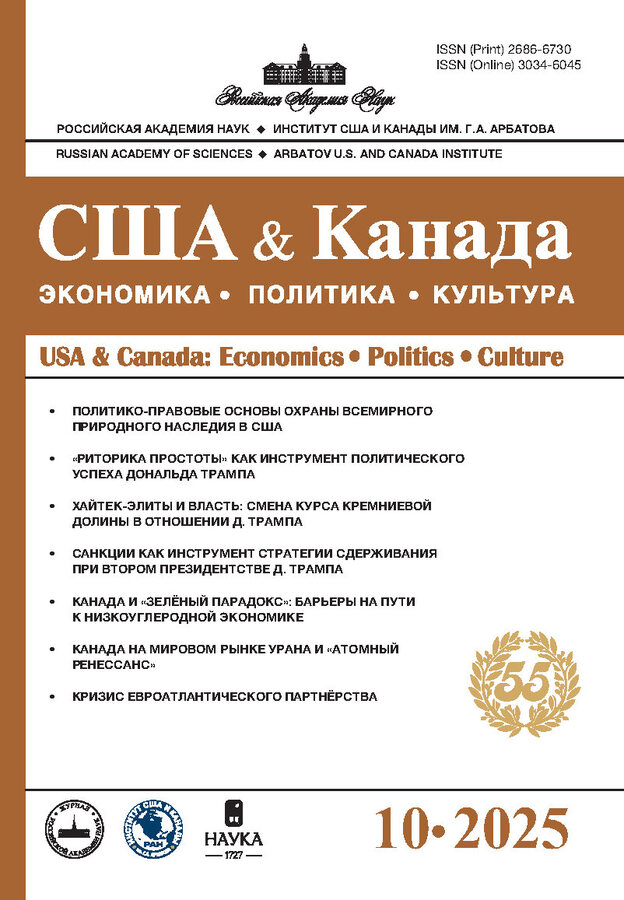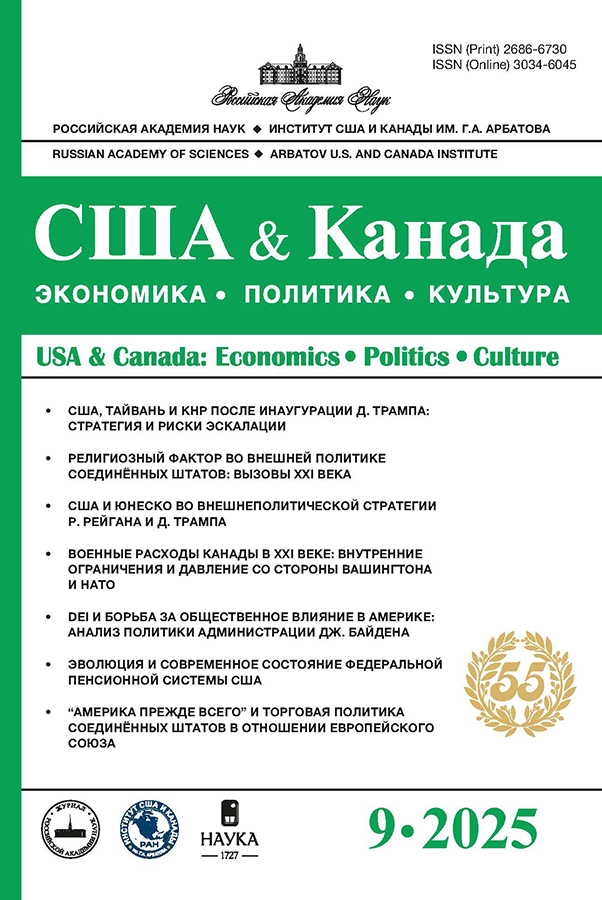Discussion in Canada on Defence Spending
- Authors: Volodin D.A.1
-
Affiliations:
- Georgy Arbatov Institute for the U.S. and Canada Studies, Russian Academy of Sciences (ISKRAN)
- Issue: No 9 (2025)
- Pages: 66-78
- Section: Military Policy
- URL: https://rjsocmed.com/2686-6730/article/view/694123
- DOI: https://doi.org/10.31857/S2686673025090069
- ID: 694123
Cite item
Abstract
In 2014 at the NATO summit it was decided that all NATO countries should spend at least 2% of GDP on defence. However no Canadian government from that time even tried to fulfill this requirement and for the last ten years Canada's military expenditures remained at the level of 1.3% of GDP. After the escalation of the Ukrainian crisis in February 2022 the U.S. intensified its criticism of those NATO countries that spend less than 2% of GDP on defence. Since 2023 the debate about how much should be spent on defence has intensified dramatically in Canada. Many Canadian experts and journalists agree that increasing military spending to 2% of GDP would require raising taxes or cutting other items of the federal budget or perhaps both. In July 2024 J. Trudeau's government promised to increase military spending to 2% of GDP by 2032. The sharp deterioration of Canada-US relations in early 2025 seriously changed the nature of the debate on military spending: whereas previously it was seen as a purely financial issue (whether to raise military spending to 2% of GDP and where to get the money for it) it is now seen primarily as a means of strengthening sovereignty and improving relations with the US. A significant milestone in the debate in Canada over the size of military spending was the fact that an increase to 2% of GDP was supported by the all major political parties before the parliamentary elections on April 28, 2025. After becoming leader of the Liberal Party and Prime Minister of Canada in March 2025, M. Carney promised following his party's victory in the parliamentary elections of 2025 to increase military spending to 2% of GDP already in 2025 and raise this spending to 3.5% of GDP by 2035.
About the authors
D. A. Volodin
Georgy Arbatov Institute for the U.S. and Canada Studies, Russian Academy of Sciences (ISKRAN)
Email: d.volodin@iskran.ru
ORCID iD: 0000-0002-4252-24-35
Scopus Author ID: 6505811996
Moscow, Russian Federation
References
- Володин Д. А. 2020. Военная политика правительства Дж. Трюдо после парламентских выборов 2019: обещания и реальность. Россия и Америка в XXI веке. № 2. doi: 10.18254/S207054760010359-1
- Комкова Е. Г. 2024. Оборонная промышленность Канады: современное состояние и особенности. Россия и Америка в XXI веке. № 7. doi: 10.18254/S207054760031930-0
Supplementary files











